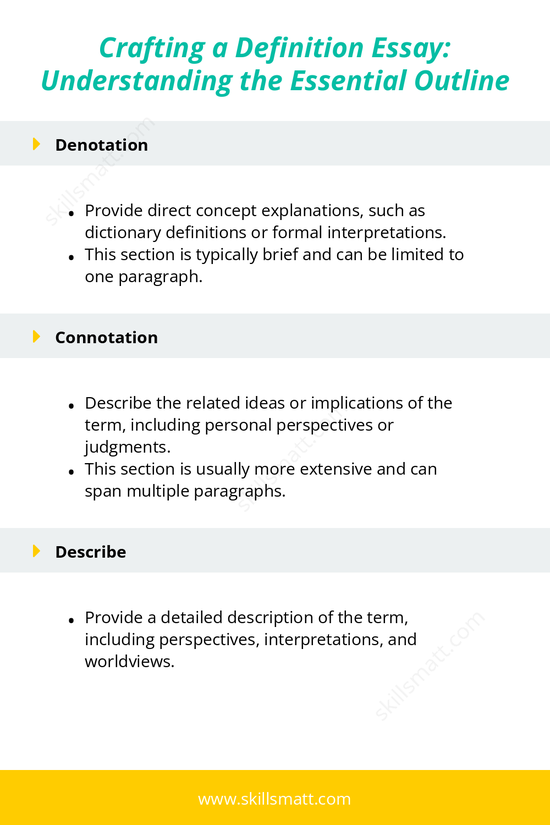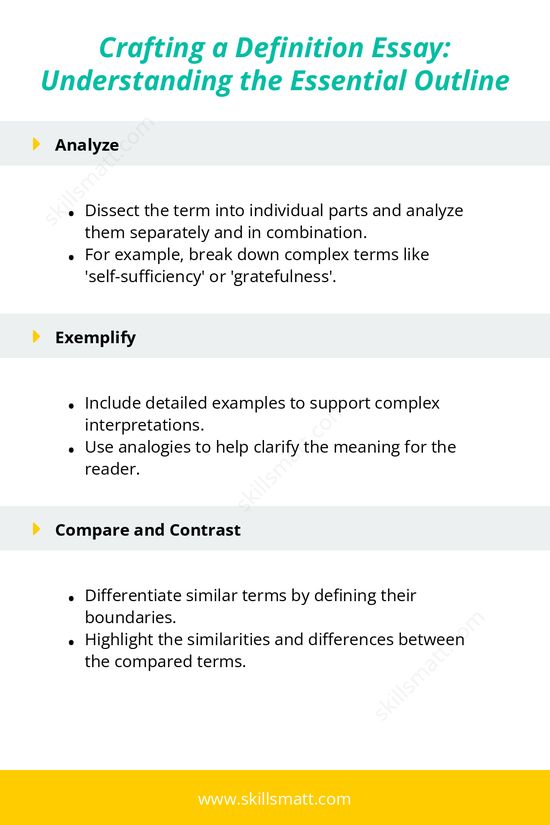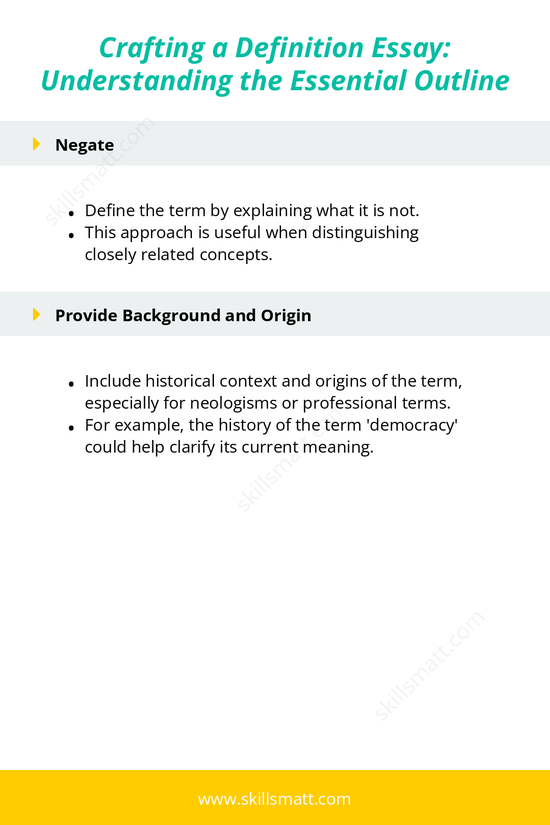Crafting a Definition Essay: Understanding the Essential Outline
1. Denotation
- Start with a direct explanation of the term. Use formal dictionary definitions or universally accepted interpretations.
- This section should be concise, typically limited to a single paragraph, providing a clear foundation for further exploration.
2. Connotation
- Expand on the term by discussing associated ideas, emotions, and personal interpretations.
- This section allows you to present cultural or subjective nuances that enrich the meaning of the term.
- Dedicate multiple paragraphs to cover various perspectives and societal implications.
3. Describe
- Provide an in-depth description of the term, exploring its broader interpretations and significance in different contexts.
- Consider multiple viewpoints and worldviews to give your audience a well-rounded understanding.
4. Analyze
- Break down the term into its fundamental components for detailed analysis.
- For example, when discussing a term like 'freedom,' analyze the individual aspects such as liberty, autonomy, and responsibility, and their interconnections.
5. Exemplify
- Use specific examples to illustrate complex definitions and enhance comprehension.
- Employ analogies or scenarios to make abstract concepts more relatable to the reader.
6. Compare and Contrast
- Highlight the similarities and differences between the term and related concepts.
- For instance, compare terms like 'freedom' and 'liberty' to define their boundaries and nuances.
7. Negate
- Clarify the term by explaining what it is not, helping to eliminate potential misconceptions.
- This approach is particularly useful for distinguishing subtle or overlapping concepts.
8. Provide Background and Origin
- Offer historical context or the origins of the term to provide deeper insights into its current meaning.
- For example, exploring the evolution of the term 'democracy' from ancient Greece to modern-day usage can highlight its transformative journey.



